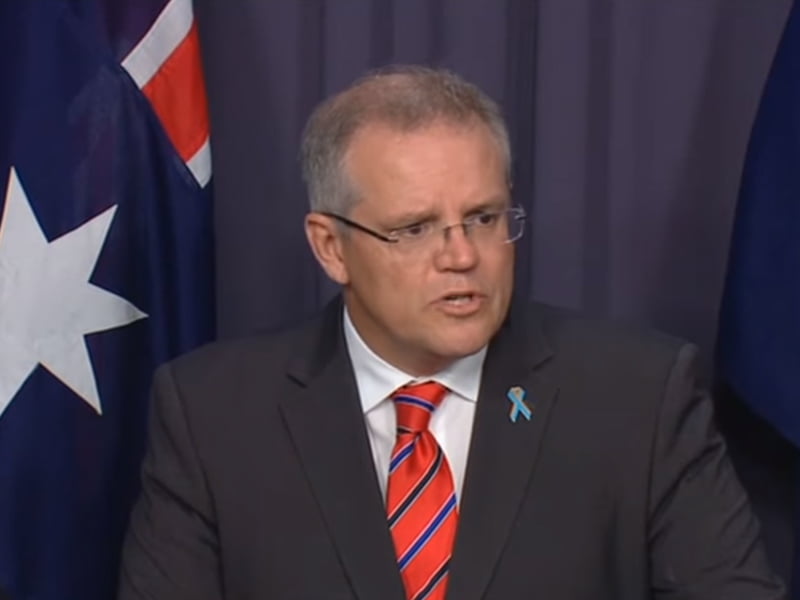The last three federal budgets have provided only meagre fare for the Aussie tech and innovation sectors. But tonight will be different. There will be meat on the bones for our entrepreneurs and innovators, both in the cities and the regions.
Oh yes, after the thin gruel of the three post-Labor budgets, we will dine tonight! Let’s put behind us the disappointments of the past.
Who can forget the 2014 Joe Hockey horror show? As an industry, we pulled the doona over our heads preparing for a long, cold winter (even as we welcomed Prince Philip as a Knight of Australia and tried to ignore the outbreak of onion-eating.)

In 2015, still under the doona, we set expectations to near zero and Treasurer Hockey still disappointed us. There was nothing in it.
In 2016, to be fair, there was a lot to like in Scott Morrison’s first budget. All of the National Innovation and Science Agenda (NISA) initiatives for one thing, and the hundreds of millions in funding for the Australian Cyber Security Strategy for another.
But with our expectations set to stratospheric under a new Prime Minister, budget night was a damp squib. Everything had already been announced. There was no big new thing.
Since then, through an innovation-austere election campaign the industry again became accustomed to the cold shoulder. And it has endured the blunt-force policy announcements of changes to the way the R&D tax scheme is interpreted by the ATO, and the re-writing of temporary skills visas.
And so he we are. As we wait for the Treasurer to stroll to the dispatch box to bring down his second budget, it is worth setting a realistic expectation.
And that is this: Surely this Prime Minister, and this Treasurer, can find a way to explain an innovation strategy, a tech industry development strategy, and science and technology strategy that are optimistic, pragmatic, inclusive across demographics, and that doesn’t scare the pants off half the population.
Ah yes, me hearties!! The industry will dine tonight!
Well, maybe. I’m daring to dream. But I know there are many people in our industry who will set their expectations at the low side.
Here are three things that might make it interesting.
The Government will announce material changes to its R&D Tax Incentive, and it won’t be terrible. We know the scheme is a bed-rock for the sector for a range of reasons.
It attracts smart people and clever companies to Australia. It supports tiny startups. It is used by multinationals to base R&D operations here. But it costs a lot – about one-third of the $9 billion-plus that the government invests in research – and it is growing at an unsustainably high-rate.
The Government was handed a senior Review of the R&D Tax Incentive more than a year ago, and has still not responded to its recommendations. The report was authored by Innovation and Science Australia chair Bill Ferris, Chief Scientist Alan Finkel, and Treasury Secretary John Fraser.
The changes to be announced tonight (and again, this is a punt) will both reduce the cost of the scheme and reduce its overall rate of growth. Sections of the startup sector will be very unhappy. But carve-outs will produce an explainable policy that underpins local companies.
Digital transformation will also figure prominently, of course. Government will hope it’s received in a good way. In March we learned that it’s raining money in government IT when the assistant minister for digital transformation Angus Taylor revealed that Commonwealth ICT spending had grown to more than $9 billion annually, from a steady rate of about $5.5 -$6 billion over the preceding five years.
That number is not getting any smaller. There are a number of high-profile technology refresh programs currently underway – the replacement of the Department of Human Services core payment system – that each individually represent the biggest programs ever undertaken in government.
We are hoping this budget delivers better visibility over these investments. You can bank on DHS getting another boost for its WPIT [Welfare Payment Infrastructure Transformation] program. This project was supposed to cost just under a billion. It is already pushing past $1.5 billion.
And meanwhile the expensive ageing infrastructure that WPIT is expected to replace still needs to be kept running in parallel. This is a sinkhole to be sure, but at least it is finally getting a fix.
I expect an expansion of the government’s incubator program, and more money for the regions. For all the focus on density issues within the CBDs of Australia’s largest cities, the political reality will draw further funding into the regions.
The $100 million ear-marked for advanced manufacturing is a start. Cyber will get additional funding, as will the CSIRO’s unit Data61.
Even as I write the words, I tremble and reach for the doona. Slowly. Pulling it over. My head.
Do you know more? Contact James Riley via Email.

